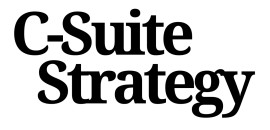
Understanding the role of budgetary quotes in executive strategy
Why Budgetary Quotes Matter in Executive Strategy
Budgetary quotes are more than just preliminary numbers. For the c-suite, they serve as a critical tool in shaping strategic direction, especially when evaluating new projects or considering organizational changes. A budgetary quote provides a rough estimate of what a project will cost, including materials, labor, and additional services. This early insight helps leaders set realistic expectations and align resources accordingly.
Connecting Budgetary Quotes to Strategic Planning
When executives request budgetary quotes, they are not only seeking a price estimate. They are looking for a foundation to inform decision making, project management, and financial planning. These quotes help clarify the potential impact of a project on the overall budget and can highlight areas where cost design or project specifications might need adjustment. Understanding the cost ranges at this stage allows for better risk management and supports more informed discussions with designers and stakeholders.
- Project details: Budgetary quotes rely on the initial project details and specifications, which can evolve as the project progresses.
- Subject to change: Since these are not final quotations, costs may shift as more information becomes available or as the scope changes.
- Strategic alignment: Early cost estimates help ensure that projects align with organizational objectives and available resources.
For more on the essential elements that shape strategic cost management, explore this guide to strategic cost management.
Aligning budgetary quotes with organizational objectives
Bridging Budgetary Quotes and Strategic Goals
For the c-suite, aligning budgetary quotes with organizational objectives is not just about numbers. It’s about ensuring every quote, estimate, and cost projection directly supports the company’s broader vision. When a designer or project manager provides a budgetary quote, it should reflect more than a rough estimate of materials, labor, and design costs. It must connect to the strategic priorities set by leadership.
- Clarity in project specifications: Accurate quotes depend on clear project details. Ambiguity in scope or design can lead to cost overruns or misaligned expectations. The c-suite should insist on comprehensive project specifications before requesting budgetary quotes.
- Cost ranges and realistic expectations: Budgetary quotes help set realistic expectations for what a project will cost. By understanding the range of possible costs, executives can plan for contingencies and avoid surprises that might derail strategic initiatives.
- Supporting financial planning: Integrating budgetary quotes into the planning process enables better allocation of resources. This ensures that project budgets align with overall financial targets and that additional services or subject changes are evaluated for their impact on cost and strategic value.
When quotes are used as a strategic tool, they inform decision making at every stage of the project management process. This approach helps the c-suite move forward with confidence, knowing that each quotation is grounded in the company’s objectives and financial realities. For a deeper dive into how cost design and strategic cost management intersect, explore key elements in strategic cost management.
Navigating uncertainty with budgetary quotes
Building Resilience Through Budgetary Quotes
Uncertainty is a constant in executive decision making, especially when it comes to project planning and financial forecasting. Budgetary quotes play a crucial role in providing a rough estimate of what a project will cost, even when all project details or specifications are not yet finalized. By requesting budgetary quotes early in the process, leaders gain a clearer understanding of potential cost ranges for materials, labor, and additional services. This approach helps set realistic expectations and supports more informed planning.
- Scenario Planning: Budgetary quotes help organizations prepare for subject change, such as shifts in project scope or design. When designers or project managers provide updated estimates, the c-suite can quickly assess the impact cost of these changes and adjust strategies accordingly.
- Agility in Project Management: With access to multiple quotes, executives can compare price and service offerings, allowing for more agile responses to evolving market or internal conditions. This flexibility is essential for maintaining momentum and moving forward with confidence, even when faced with incomplete information.
- Risk Mitigation: Leveraging budgetary quotes as part of the decision-making process enables leaders to identify potential cost overruns or areas where additional financial controls may be needed. This proactive approach reduces the risk of surprises during construction or implementation phases.
Integrating budgetary quotes into your strategic toolkit also means understanding their limitations. These quotes are not final quotations, but rather informed estimates based on current project specifications and available data. As the project evolves, so will the estimates, which is why ongoing communication with designers and suppliers is essential.
For organizations seeking to strengthen their approach to uncertainty, benchmarking budgetary quotes against industry standards and competitor practices can provide valuable context. For a deeper dive into how leading companies navigate competitive landscapes and leverage financial data for strategic advantage, explore this strategic insights resource.
Integrating budgetary quotes into the c-suite decision process
Embedding Budgetary Quotes in Executive Workflows
Integrating budgetary quotes into the c-suite decision process is about more than just collecting numbers. It’s about weaving these quotes into the fabric of executive workflows, so that every strategic move is informed by a clear understanding of cost, price, and project realities. Budgetary quotes provide a rough estimate of what a project will cost, but their value grows when they are actively referenced during planning, project management, and financial review. Here’s how to make them work for you:- Establish a standardized process: Ensure that every request for a budgetary quote follows a consistent format. This helps designers, project managers, and financial teams compare cost ranges and understand the impact of project details or specifications changes.
- Centralize quote management: Use a shared platform or dashboard where all budgetary quotes are stored and updated. This enables quick access to historical quotes and supports decision making when project scope or materials labor requirements shift.
- Integrate with project planning: Link each budgetary quote to specific project milestones. This makes it easier to track how changes in design or additional services affect overall costs and timelines.
- Facilitate cross-functional review: Bring together designers, finance, and operations to review budgetary quotes. This collaborative process helps ensure that estimates are realistic and aligned with organizational objectives.
Driving Realistic Expectations and Agile Decisions
When budgetary quotes are embedded in the c-suite process, leaders can set more realistic expectations for stakeholders. This approach also enables faster pivots when subject change or new information arises. For example, if a project’s cost design or materials labor estimate shifts, executives can quickly assess the financial impact and decide whether to move forward, request budgetary adjustments, or change project direction. A well-integrated budgetary quote process also helps avoid surprises. By regularly reviewing and updating quotes as project specifications evolve, the c-suite maintains a clear view of potential cost overruns and can proactively manage risks.Key Considerations for Effective Integration
| Step | Purpose | Benefit |
|---|---|---|
| Standardize quote requests | Ensure consistency in information provided | Improved comparability and understanding |
| Centralize quote storage | Enable easy access and tracking | Faster decision making and historical analysis |
| Link to project management tools | Connect quotes to project milestones | Better visibility on cost changes and planning |
| Schedule regular reviews | Update quotes as project details evolve | Maintain realistic expectations and agile responses |
Common pitfalls when relying on budgetary quotes
Recognizing Where Budgetary Quotes Can Mislead
Budgetary quotes are valuable for early-stage planning, but they come with limitations that can impact strategic decision making. Understanding these pitfalls is essential for the c-suite to avoid costly missteps and set realistic expectations for project outcomes.
- Overreliance on Rough Estimates: Budgetary quotes are often based on limited project details and high-level specifications. Treating these as final costs can result in significant budget overruns when the actual project scope is defined.
- Ignoring Subject to Change Clauses: Many quotes help set a preliminary budget, but they typically include disclaimers about materials, labor, or market fluctuations. Failing to account for these variables can mislead executives about the true cost of a project.
- Insufficient Communication with Designers and Stakeholders: If the design or project management teams are not fully aligned on the project specifications, the budgetary quote may not reflect the full scope, including additional services or changes required as the project evolves.
- Assuming Uniformity Across Providers: Not all designers or construction partners use the same methodology for preparing a budgetary quote. Comparing quotes without understanding the underlying assumptions can lead to poor decision making.
- Failure to Update Quotes as Projects Progress: As project details become clearer, the initial estimate should be revisited. Relying on outdated budgetary quotes can result in missed opportunities or unexpected costs.
Mitigating Risks in the Quotation Process
To avoid these pitfalls, leaders should ensure a robust process for requesting and reviewing budgetary quotes. This includes:
- Requesting detailed breakdowns of costs, including materials, labor, and any anticipated additional services.
- Clarifying the assumptions and exclusions in each quotation to understand what will and will not be covered.
- Engaging project management and design teams early to provide accurate project specifications.
- Regularly updating the budget as new information becomes available and as the project scope changes.
By recognizing these common pitfalls and implementing a disciplined approach, the c-suite can use budgetary quotes to support more informed, agile, and realistic planning.
Turning budgetary quotes into actionable insights
From Estimates to Strategic Actions
Turning budgetary quotes into actionable insights is where executive strategy truly comes alive. A budgetary quote is more than just a rough estimate of what a project will cost; it is a tool for informed decision making, risk management, and project planning. The process involves translating numbers into clear direction, ensuring that every quote supports the organization’s broader objectives and financial health.
- Clarify project details and specifications: Ensure that every budgetary quote is based on up-to-date project details and specifications. This minimizes the risk of subject change and helps align expectations between stakeholders, designers, and project managers.
- Assess cost ranges and variables: Quotes help identify cost ranges for materials, labor, and additional services. Understanding these variables allows leaders to anticipate how changes in design or scope will impact cost and timelines.
- Integrate quotes into project management: Use budgetary quotes as benchmarks throughout the project management process. Regularly compare actual costs to initial estimates to identify variances early and adjust planning or resources as needed.
- Facilitate transparent communication: Sharing budgetary quotes with key decision makers and designers provides a common reference point. This transparency supports realistic expectations and helps teams move forward with confidence.
- Drive financial discipline: Treat each quotation as a commitment to financial discipline. By requesting budgetary quotes at each stage, leaders can monitor the impact of design changes or requests for additional services, ensuring that costs remain aligned with strategic goals.
Best Practices for Actionable Budgetary Insights
To maximize the value of budgetary quotes, consider these best practices:
| Action | Strategic Benefit |
|---|---|
| Request detailed breakdowns | Improves understanding of cost drivers and enables better negotiation |
| Update quotes with project changes | Ensures estimates reflect current project scope and design |
| Compare multiple quotes | Reveals market price trends and supports competitive sourcing |
| Document assumptions and exclusions | Reduces risk of surprises and clarifies what is included in the cost |
| Review regularly with finance and project teams | Aligns financial planning with operational realities |
Ultimately, the ability to turn a budgetary quote into a strategic lever depends on disciplined process, clear communication, and a commitment to continuous review. By embedding these practices, the c-suite can ensure that every quote budgetary supports not just project delivery, but also long-term organizational resilience and growth.














